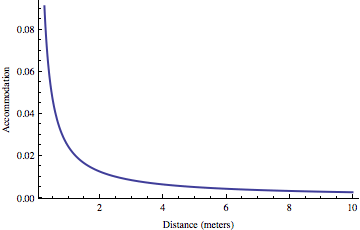My friend Allen Downey (whose blog, Probably Overthinking It, has a bunch of good stuff on how to think about statistics and data) sent me a mini-rant a while back about the way people often write and talk about quantum physics. He asked me what I thought and suggested it’d be a good topic to write about here. I agree that it’s a good topic. I’ll give a bit of introduction, and then just quote Allen (with his permission).
The topic is the grandiose way in which people often play up the mysteriousness of quantum physics. For about as long as there’s been quantum physics, people have been saying pseudo-profound things about What It All Means. I tend to agree with Allen that the more woo-woo descriptions are annoying at best and misleading at worst. (I’ve grumbled about some before.)
Allen specifically refers to this quote from David Brooks:
A few of the physicists mention the concept of duality, the idea that it is possible to describe the same phenomenon truthfully from two different perspectives. The most famous duality in physics is the wave-particle duality. This one states that matter has both wave-like and particle-like properties. Stephon Alexander of Haverford says that these sorts of dualities are more common than you think, beyond, say the world of quantum physics.
Brooks is writing about the answers to the Edge’s 2011 Question, “What scientific concept would improve everybody’s cognitive toolkit?” (This is not The Edge from U2; it’s the website edge.org, which annually asks a broad question like this to a bunch of scientists.)
With that context, here’s Allen:
Physicists who wax philosophic about wave-particle duality are a pet peeve of mine, especially when they say nonsensical things like “light is both a particle and a wave,” as if that were (a) true, (b) a useful way to describe the situation, and (c) somehow profound, mystical and inspiring. But none of those are true.
It seems to me to be (a) clearer, (b) not profound, and (c) true to say instead that light is neither a (classical) particle nor a wave. It’s something else. If you model it as a particle, you will get things approximately right in some circumstances, and completely wrong in others. If you model it as a wave, same thing, different circumstances. And if you model it as (modern) particle, you get good answers in almost all circumstances, but it seems likely that we will find circumstances where that model fails too (if we haven’t already).
So none of that is an example of “describ[ing] the same phenomenon truthfully from two different perspectives.” It’s just plain old model selection.
This is quite right. An electron is not a particle (as that term is generally understood), nor is it a wave. It’s an excitation of a quantum field. Practically nobody has much intuition for what “an excitation of a quantum field” means, so it’s useful to have alternative descriptions that are more intuitive, albeit imperfect. Sometimes an excitation of a quantum field behaves like a particle, and sometimes it behaves like a wave.
By the way, when I say it’s useful to have such descriptions, I don’t just mean when talking to laypeople — although that’s part of what I mean. Actual physicists use these description in our own minds all the time. That’s perfectly fine, as long as we know the limits of how far we can push them.
But to go from “electrons sometimes behave like particles, and sometimes like waves” to “an electron is both a particle and a wave” is to mistake the maps for the territory. Here’s an analogy. Sometimes we model the economy as a machine (“economic engines”, “driving the economy”, “tinkering”). Sometimes we model it as a living thing (“green shoots”). But nobody makes the mistake of thinking that the economy is some kind of cyborg.
Stephon Alexander, the physicist Brooks refers to, isn’t particularly guilty of this sin. He actually does a pretty good job explaining what he means by duality in his answer (scroll down on that page to get to him):
In physics one of the most beautiful yet underappreciated ideas is that of duality. A duality allows us to describe a physical phenomenon from two different perspectives; often a flash of creative insight is needed to find both. However the power of the duality goes beyond the apparent redundancy of description. After all, why do I need more than one way to describe the same thing? There are examples in physics where either description of the phenomena fails to capture its entirety. Properties of the system ‘beyond’ the individual descriptions ’emerge’ …
Most of us know about the famous wave-particle duality in quantum mechanics, which allowes the photon (and the electron) to attain their magical properties to explain all of the wonders of atomic physics and chemical bonding. The duality states that matter (such as the electron) has both wave-like and particle like properties depending on the context. What’s weird is how quantum mechanics manifests the wave-particle duality. According to the traditional Copenhagen interpretation, the wave is a travelling oscillation of possibility that the electron can be realized omewhere as a particle.
There’s one major sin in this description: the word “magical.” Other than that, his description of what wave-particle duality actually means is just fine. One of the other respondents, Amanda Gefter, also writes about duality. She starts out OK, but then uses the notion as an egregiously silly metaphor for people disagreeing with each other. (Sadly, you can’t expect much from someone who works for New Scientist, which was once a good pop-science magazine but isn’t anymore.)
